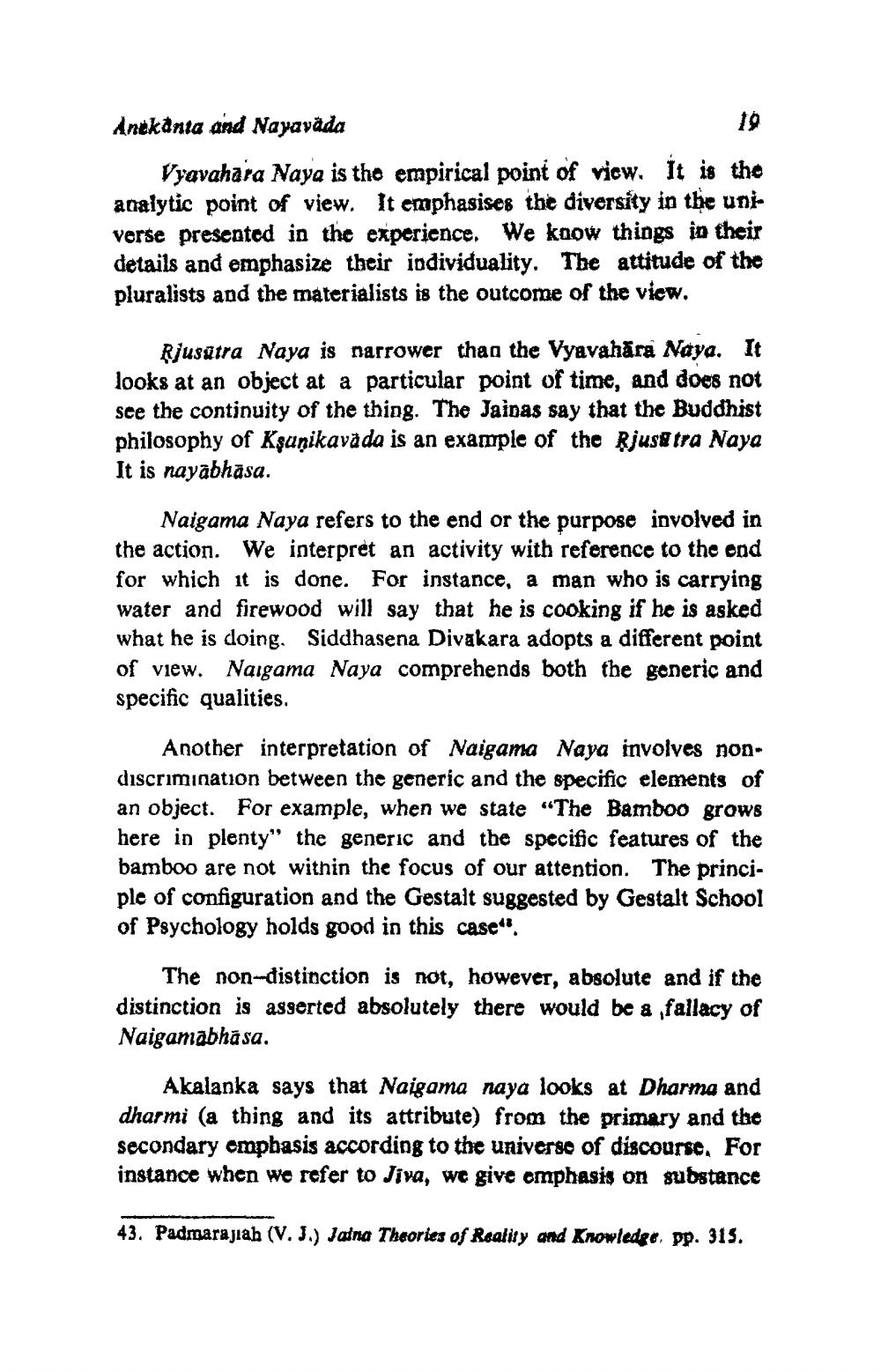________________
Anekania and Nayavada
Vyavahara Naya is the empirical point of view. It is the analytic point of view. It emphasises the diversity in the universe presented in the experience. We know things in their details and emphasize their individuality. The attitude of the pluralists and the materialists is the outcome of the view.
Rjusätra Naya is narrower than the Vyavahāra Naya. It looks at an object at a particular point of time, and does not see the continuity of the thing. The Jainas say that the Buddhist philosophy of Kșunikava da is an example of the Rjus& tra Naya It is nayabhasa.
Naigama Naya refers to the end or the purpose involved in the action. We interpret an activity with reference to the end for which it is done. For instance, a man who is carrying water and firewood will say that he is cooking if he is asked what he is doing. Siddhasena Divakara adopts a different point of view. Naigama Naya comprehends both the generic and specific qualities.
Another interpretation of Naigama Naya involves nondiscrimination between the generic and the specific elements of an object. For example, when we state “The Bamboo grows here in plenty" the generic and the specific features of the bamboo are not within the focus of our attention. The principle of configuration and the Gestalt suggested by Gestalt School of Psychology holds good in this case".
The non-distinction is not, however, absolute and if the distinction is asserted absolutely there would be & ,fallacy of Naigamabhasa.
Akalanka says that Naigama naya looks at Dharma and dharmi (a thing and its attribute) from the primary and the secondary emphasis according to the universe of discourse. For instance when we refer to Jiva, we give emphasis on substance
43. Padmarajiah (V. J.) Jatna Theories of Reality and Knowledge, pp. 315.




